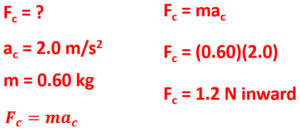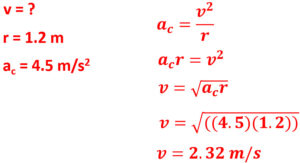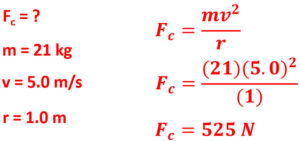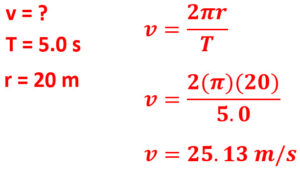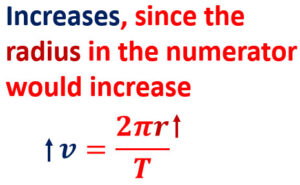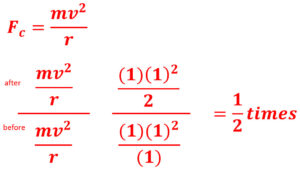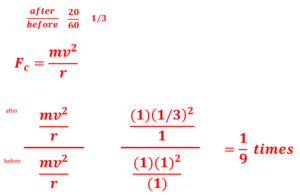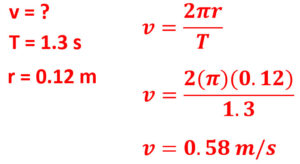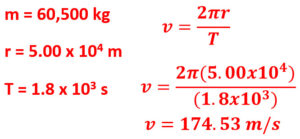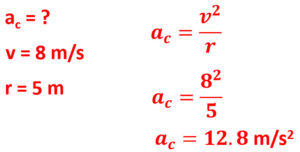Circular Motion
Circular motion requires an inward force, centripetal force, to create a change in direction resulting in a circular pattern.
Go through this lesson with our video or read and do the practice checking your work with our solutions below.
Two Types of Circular Motion
A rotation occurs when an entire object spins around an internal axis. A revolution is when an object is located beyond the axis and follows a circular path around beyond the axis. See how the stickman is revolving around the central axis. The axis is a central point around which rotation takes place.
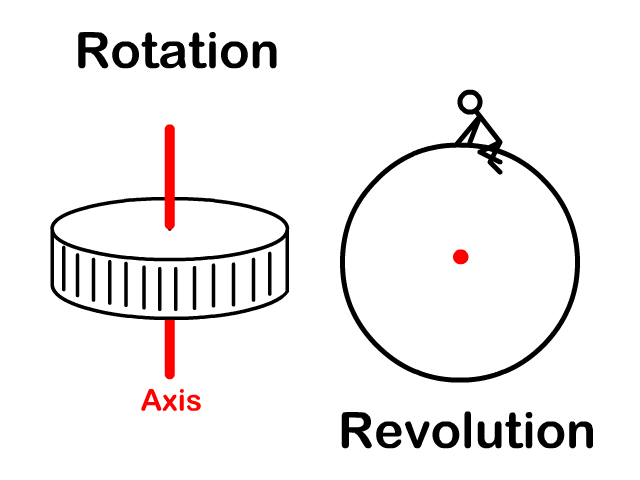
Tangential Velocity
The tangent is a straight line that would just touch the curve of the circle as seen in the animation.
Because velocity is a vector, it includes magnitude and direction. So will use the term tangential velocity to represent what the velocity would be if released and allowed to follow a straight line path.
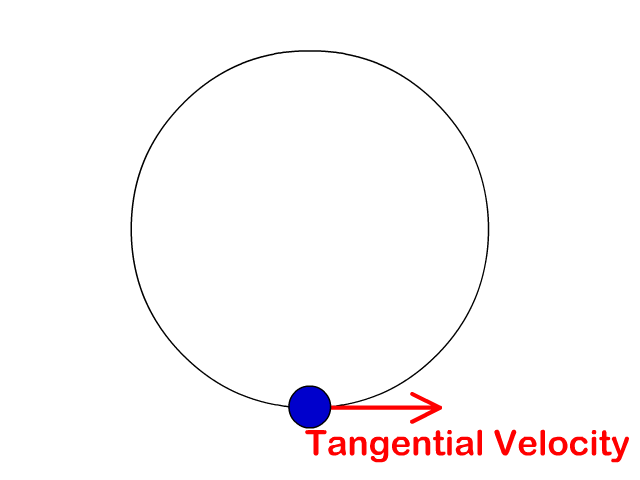
Inertia Versus Circular Motion
- Inertia makes an object want to continue forward at a constant velocity
- We need a inward force to change direction and create circular motion
- This inward force is centripetal force (Fc)

Centripetal Force
Centripetal Force (Fc) is an inward force towards the center of a circle, changing the direction, keeping an object in a circular path.
Since direction changes due to centripetal force, circular motion is accelerated and we call this centripetal acceleration (ac).
If you lost the centripetal force the object would stop revolving and continue in a straight line tangent to the circumference of the circle.
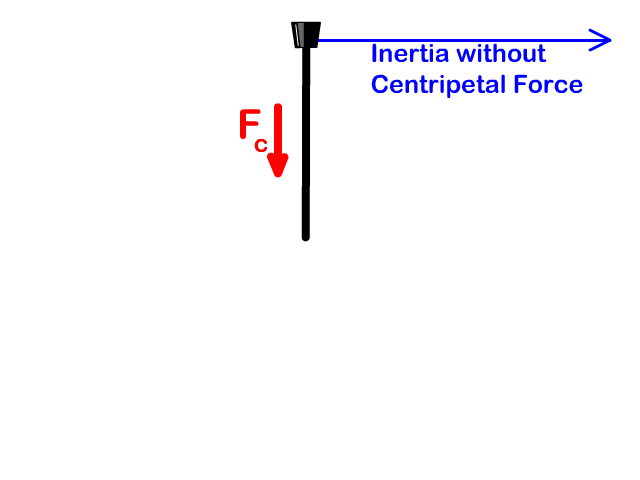
Q4: What would happen to a rubber stopper in circular motion if there were no centripetal force?
Q5: What is tangential velocity?
Q6: What force is necessary to have circular motion?
Q7: What direction is this force?
Q8: A moving object’s inertia make it want continue ______________________________.
Circular Motion Variables
| Variable | Name | Unit | Unit Abbreviation |
| Fc | centripetal force | Newton | N |
| m | Mass | kilogram | kg |
| ac | centripetal acceleration | meters per second squared | m/s2 |
| v or vtangential | velocity or tangential velocity | meters per second | m/s |
| r | radius | meters | m |
| T | period | seconds | s |
| f | frequency | hertz | Hz |
Centripetal Force Causes Centripetal Acceleration
Centripetal force creates centripetal acceleration related to mass is seen in this equation:

Centripetal acceleration is equal to the velocity squared divided by the radius seen in this equation:
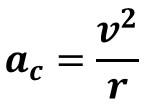
Q9: How much centripetal force is required to create an inward acceleration of 2.0 m/s2 to keep a 0.60 kg object in a circular path?
Q10: What is the velocity of an object going in a circle that has a radius of 1.2 meters and an inward acceleration of 4.5 m/s2?
The result after putting the previous two equations together is this main centripetal force (Fc) equation
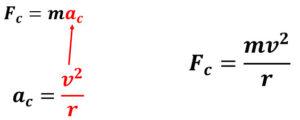
Q11: How much centripetal force is required to cause a 21 kg object to rotate with a speed of 5.0 m/s in a circle with a radius of 1.0 meters?
Sources of Centripetal Force
What provides the centripetal force allowing for circular motion?
Friction for a car to drive around a corner
-
-
- Fc = Ff friction
-
Gravity for the moon to go around earth
-
-
- Fc = Fg gravity
-
Tension for spinning something around your head with a rope
-
-
- Fc = FT tension in the rope
-
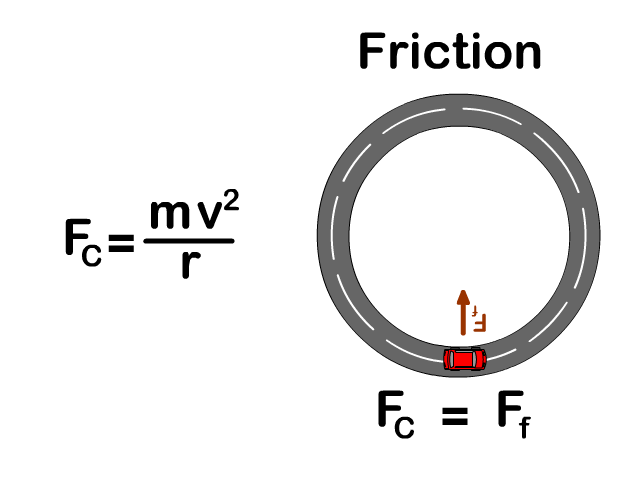
Important Note: The problems in this unit may not state centripetal force directly. They may ask what is the tension, gravity, or friction keeping an object in circular motion. If stated this way, solve for centripetal force (Fc).
What is a Period?
Period (T) is the time it takes for a specific motion to occur. See in the animation how this could be one swing, rotation, wave, segment, or osculation. In this unit it will be a rotation.
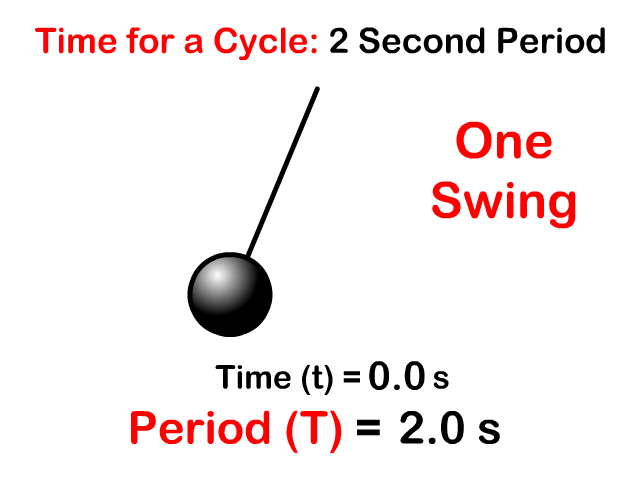
Period and Frequency
- Period (T) is the time it takes for one cycle and has the unit second (s)
Period Equation

- Frequency (f) is the number of cycles per time and has the unit Hertz (Hz) which also means cycles per second
Frequency Equation:

You can find either period or frequency with number of cycles and time that those took or with inverse of frequency or period.

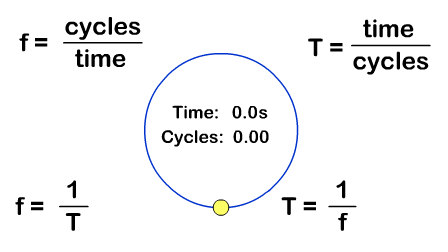
Q12: What is the period when 50 rotations occur in 20 seconds?
Q13: What is the frequency when 50 rotations occur in 20 seconds?
Tangential Velocity Equation
Tangential velocity is calculated by taking the circular distance divided by the time it takes to go around the circle or period (T). The distance around the circle is found by calculating the circumference of a circle.
2πr = circle circumference (unit: meters (m))
T = Period: Time it takes for one rotation (unit: seconds (s))
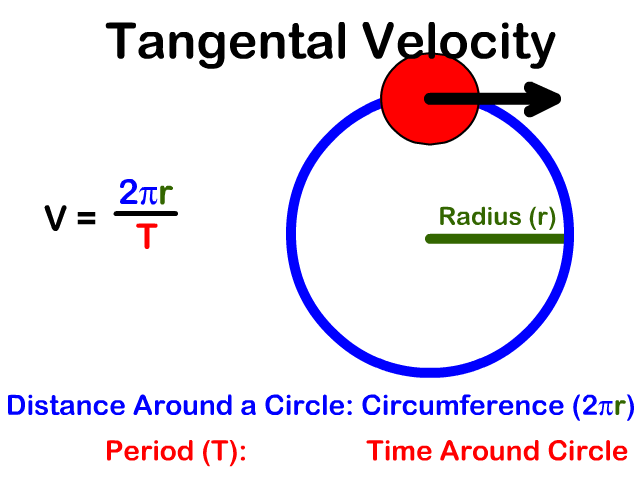
A greater radius gives an object a greater velocity when having the same period. You can analyze the equations in this unit along with any other using the rule of ones. Click here if you want a reminder on how to use this. Notice in the image that the fastest circle is green which is the furthest out and the slowest is red.
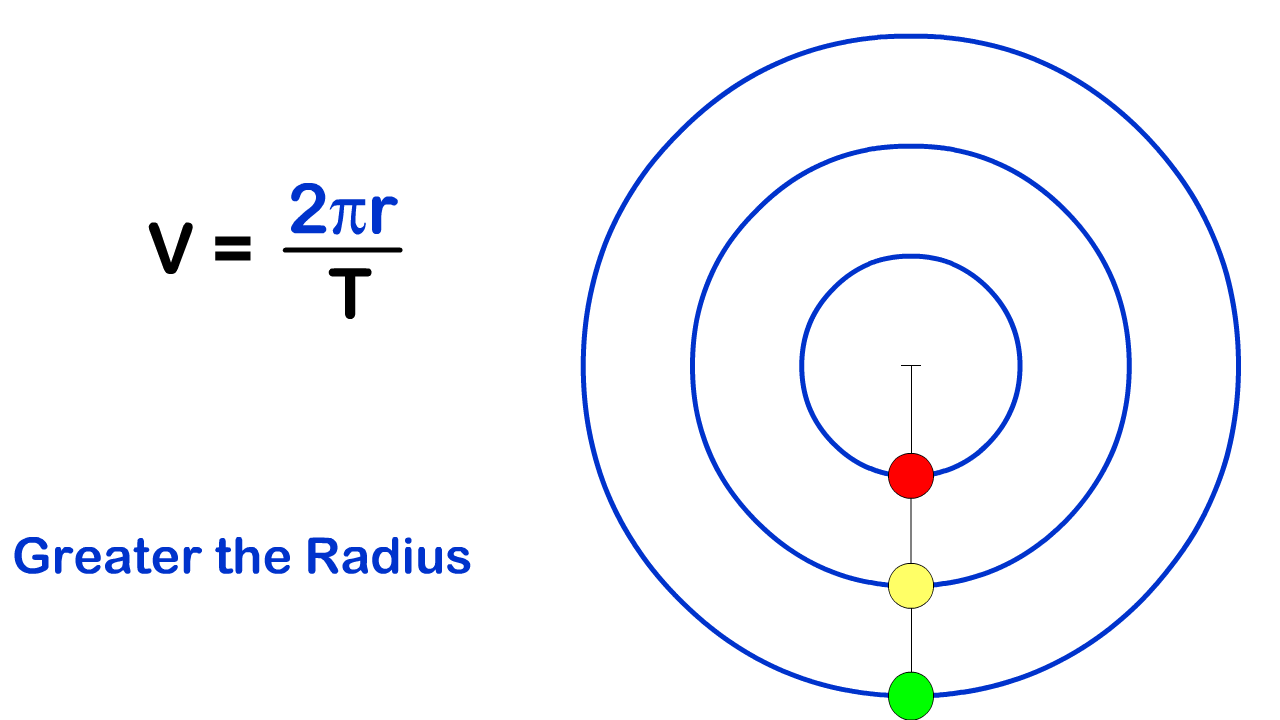
Q14: What is the tangential velocity of a carnival ride that takes 5.0 seconds to go around in a circle with a radius of 20 meters?
Q15: Does tangential velocity increase or decrease when further away from the axis on a rotating object?
Q16: How much different is the tangential velocity if an object takes three times as much time to revolve around an object at the same radius?
Centripetal Force Example Problems
1. What would happen to the centripetal force required to keep an object going in a circle if the radius of a circle was doubled?
2. How many times the centripetal force would you have if a car slowed from 60 mph to 20 mph going around a curve?
3. Kent spins in his chair with a frequency of 0.5 Hz. What is the period of his spin?
4. A record takes 1.3 s to make one complete rotation. An object on this record is 0.12 m from the center. What is its velocity?
5a. The pilot of a 60,500 kg jet plane is flying in circles whose radius is 5.00 x 104 m. It takes 1.8 x 103 s to make one rotation. What is the velocity of the plane?
5b. How much centripetal force would there be?
6. What is the centripetal acceleration of a bike traveling a tangential speed of 8 meters per second in a circle that has a radius of 5 meters?
Circular Motion Practice Quiz
Links:
- On to our StickMan Physics Torque Page
- Back to the main Universal Gravitation and Circular Motion Page
- Back to the Stickman Physics Home Page
- Equation Sheet

